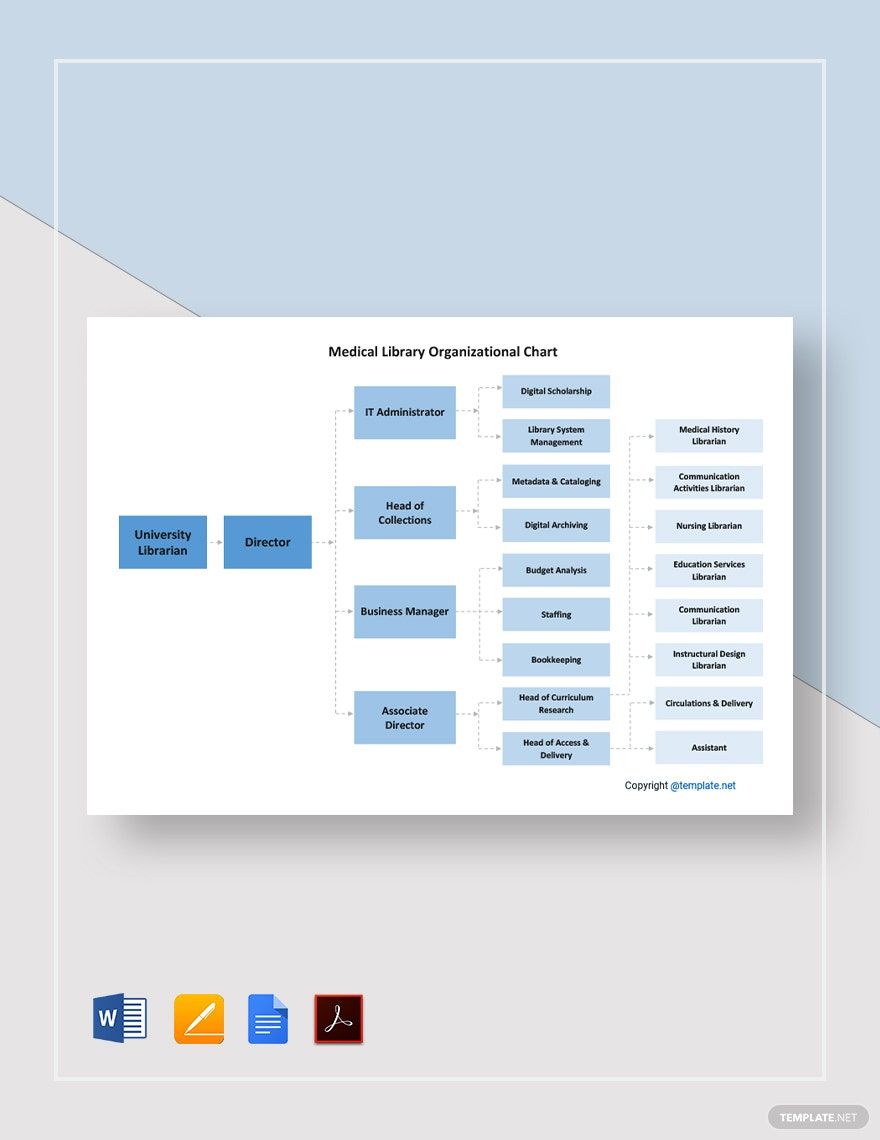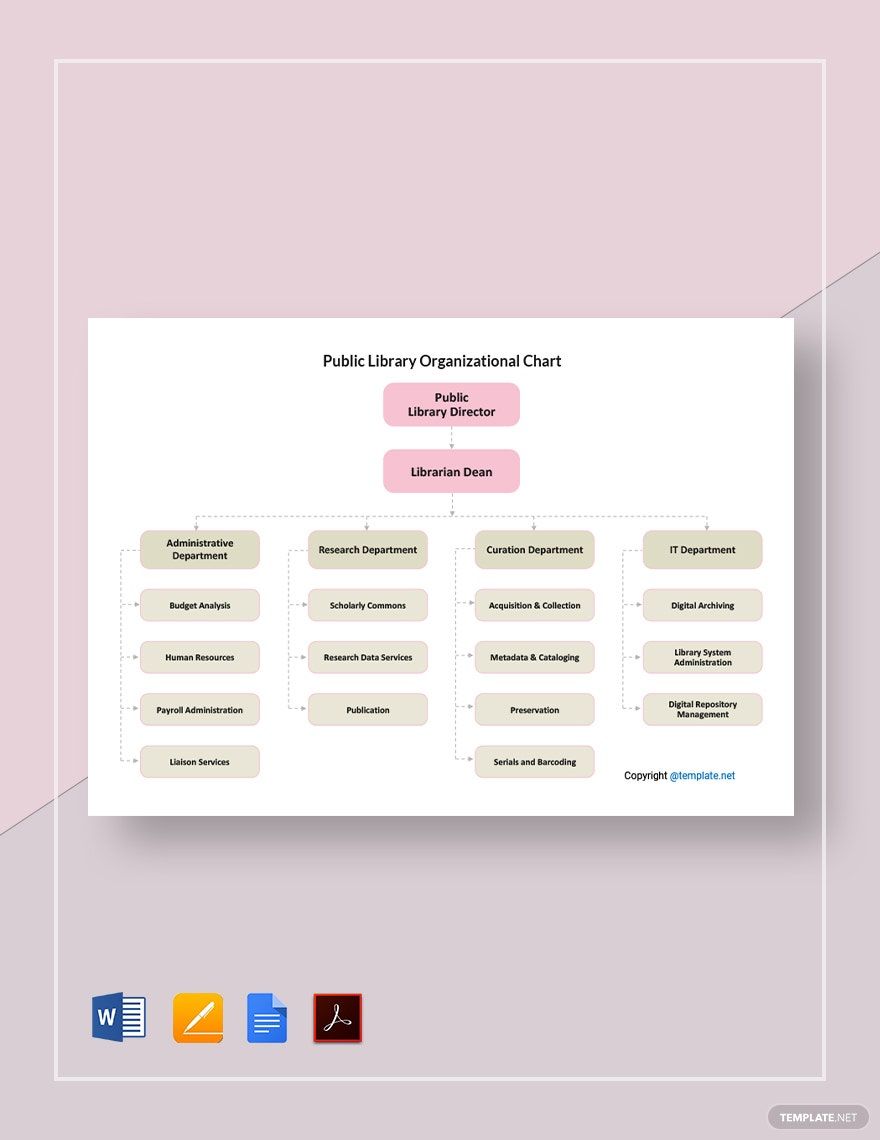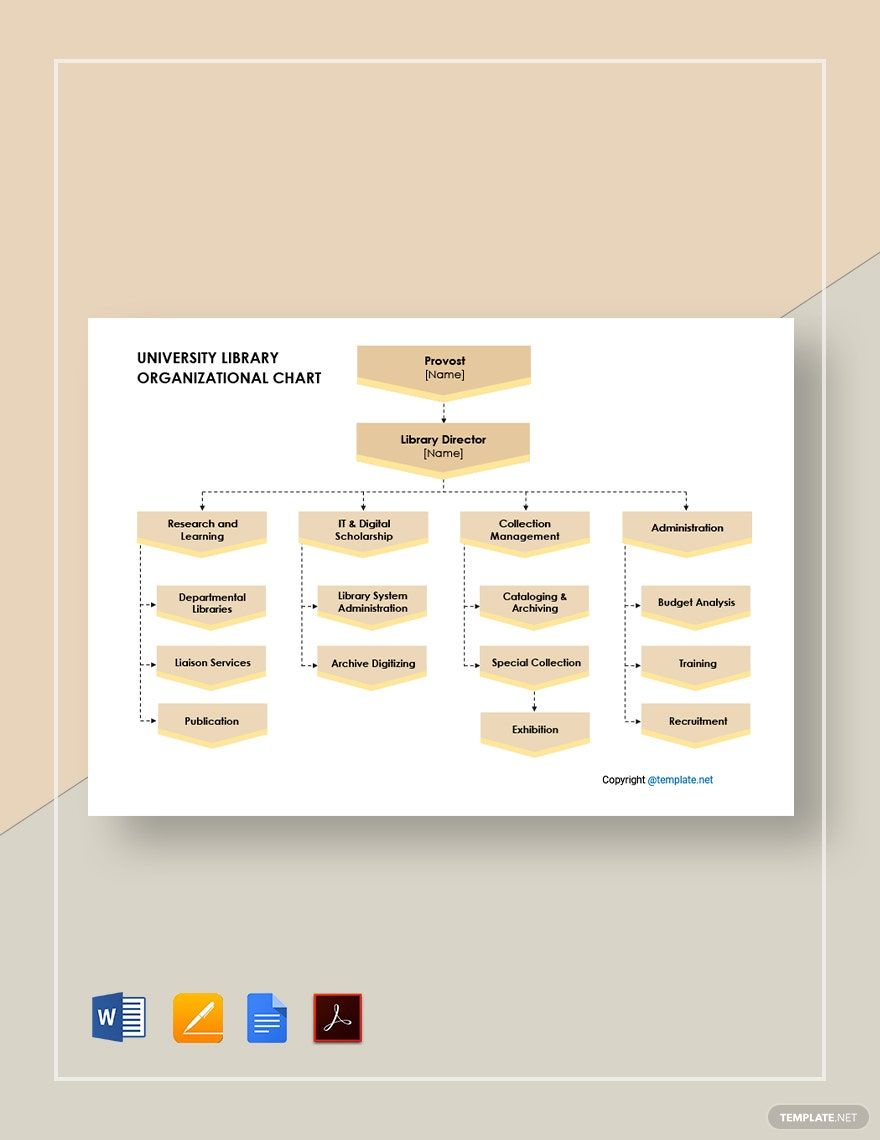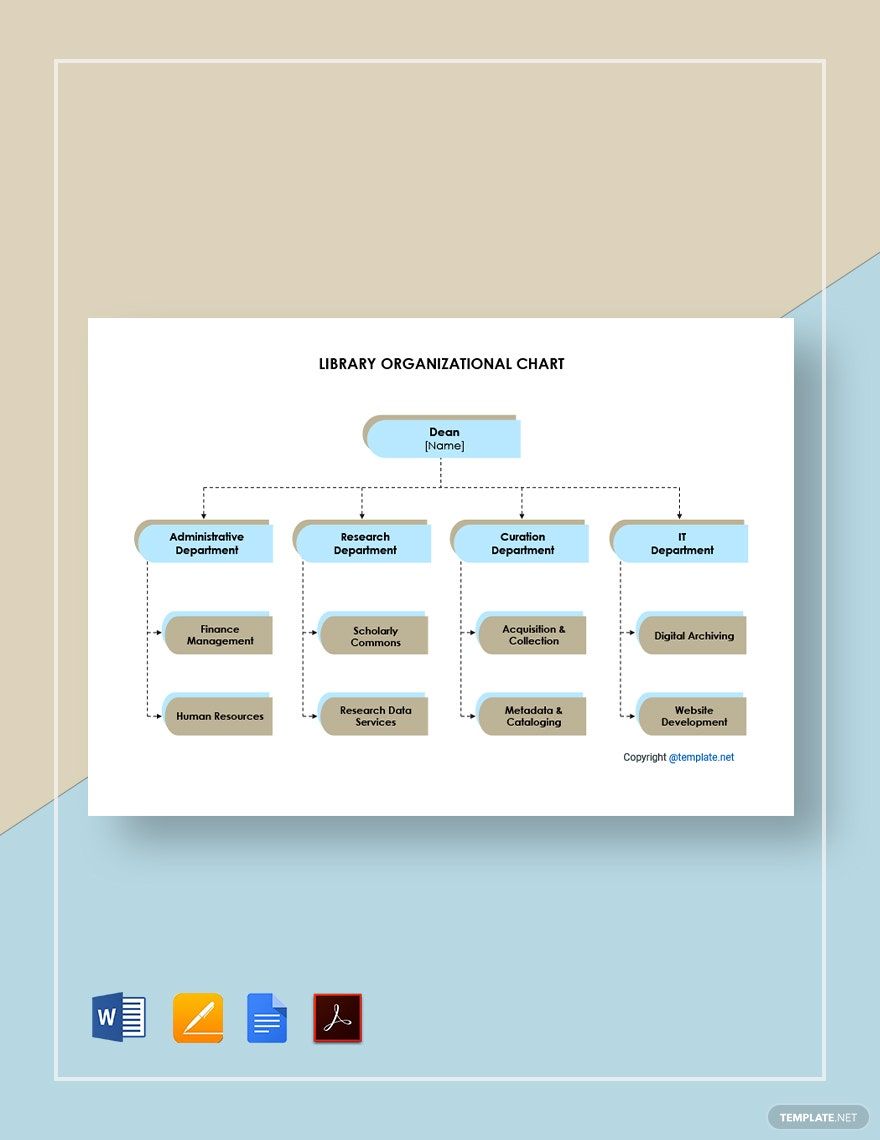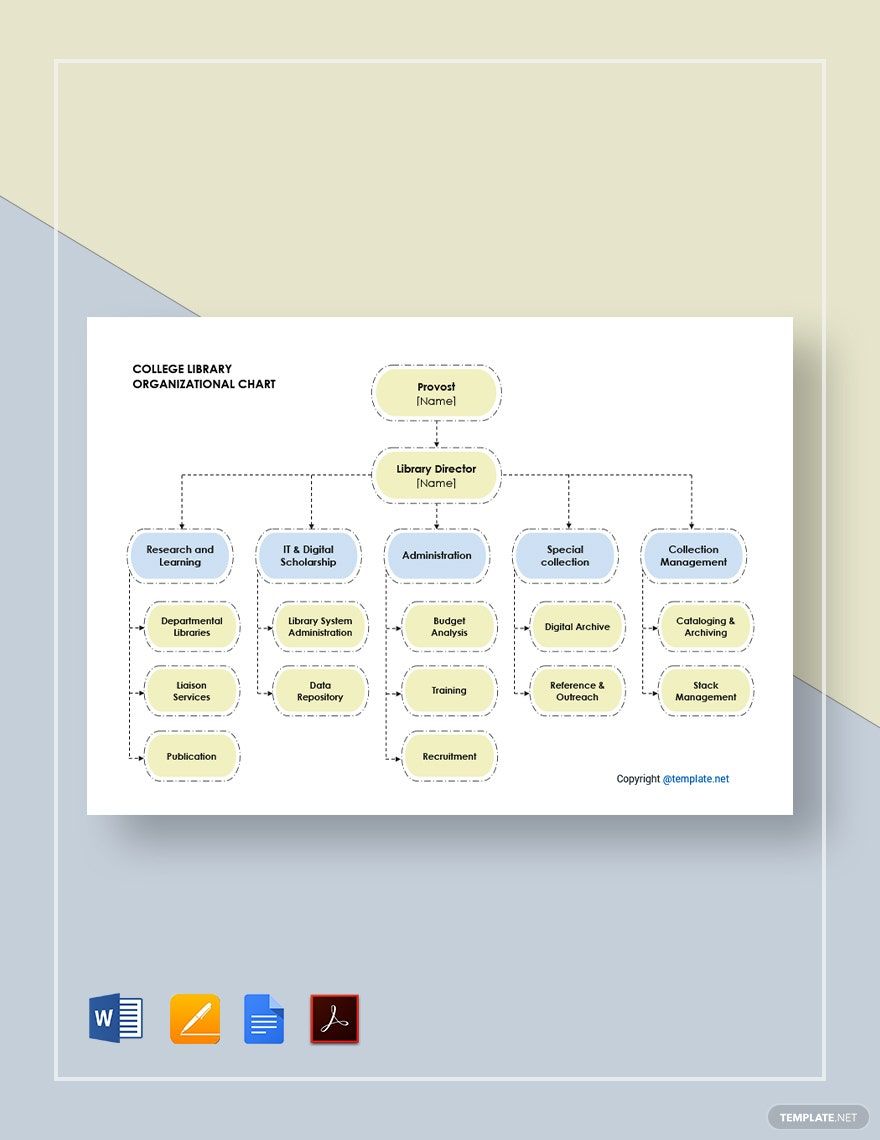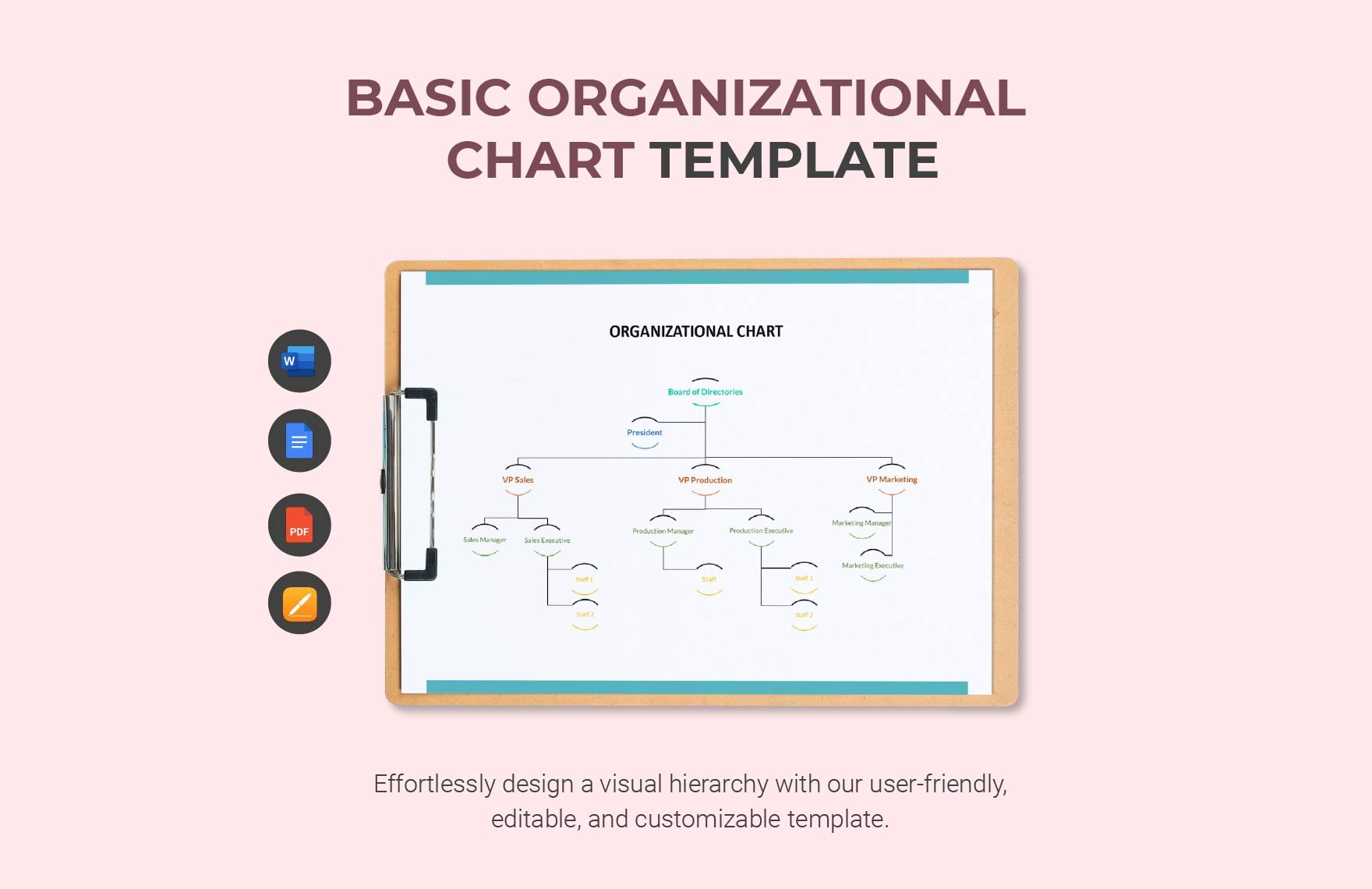Not everybody is familiar with the organizational structure of the library, so how about you enlighten your library patron with the different personnel assigned in each library section and departments? Create a comprehensive organizational chart for your institution and check out our ready-made templates on Library Organizational Charts, all available in Google Docs format. They are 100% customizable and are readily downloadable any time, anywhere. No need for you to start from scratch! So what are you waiting for? Grab this opportunity to detail the people in charge in your library and grab a copy today.
How to Create a Library Organizational Chart in Google Docs
ALA recorded that many users are not familiar with the roles and functions of a librarian. Most of the time, people tend to confuse the work of a librarian and a paraprofessional. Thus, it is highly recommended to inform your users about your library's organizational structure to avoid confusion. Learn more about how to make an organizational chart and read the following tips below.
1. Identify What Type of Library You Have
Libraries are not only limited in schools and universities. In fact, there are two other types of libraries, which are the public libraries and special libraries. Based on the library you have, determine the different roles and responsibilities operating your institution.
2. Differentiate the Various Roles and Committees in Your Library
There are two types of services a librarian can offer to its patrons. They can either be classified as technical services and the readers services. At the same time, like every other organization and institution, it has top management that directs the library's daily operations. Make sure to differentiate each department's roles in your library and evaluate their importance in your organizational structure.
3. Arrange Each Department or Positions Hierarchically
There is a head librarian assigned for each department and library section. Depending on the number of students enrolled in a university or the number of users, the library can add library assistants and library clerks for each section. Arrange each position and the department found in the library in your organizational chart.
4. Design and Finalize Your Organizational Chart
Depending on your preferences, you can either have a vertical structure or a horizontal structure for your organizational chart. Make sure to arrange each position hierarchically, making it clear for your readers to identify the top management, the middle management, and the lower management. Once you're done, give life to your chart by adding designs, then finalize your output.
